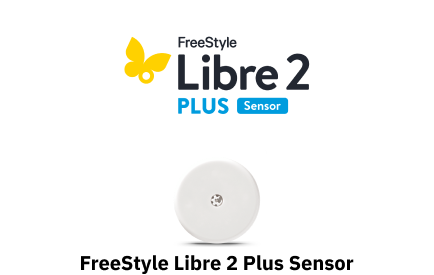Omnipod® 5 and CGM Sensor Integrations


How to get the full experience
In order to get all of the advantages of automated insulin delivery (AID) you need a Continuous Glucose Monitor (CGM) sensor. With a CGM connected, your Omnipod 5 can give continuous insulin delivery to help keep you in range, day and night1-3.
Works with the leading CGM sensor brands
The Omnipod 5 Automated Insulin Delivery System is integrated with the following CGM sensors:
Features of using an integrated sensor
SmartAdjust™ Technology
To help protect against highs and lows4-6 our algorithm adjusts to your insulin needs every 5 minutes based on readings from your sensor.
SmartBolus Calculator
The SmartBolus Calculator can suggest a bolus dose based on carb amounts and current sensor trend and value, so you don’t have to.
Activity Feature
When enabled, this feature reduces insulin delivery for times when glucose typically goes low, like during exercise.
Get started with Omnipod 5


Looking for more information?
1. Brown S. et al. Diabetes Care. 2021;44:1630-1640. Prospective pivotal trial in 240 participants with T1D aged 6 - 70 yrs. Study included a 14-day standard therapy (ST) phase followed by a 3-month Omnipod 5 hybrid closed-loop (HCL) phase. Average time in range (70-180mg/dL or 3.9-10 mmol/L) (6AM-12AM) in adults/adolescents and children for standard therapy vs Omnipod 5 = 64.8% vs. 72.5%; 51.5% vs. 64.6%. Average time in range (70-180mg/dL or 3.9-10 mmol/L) in adults/adolescents and children for standard therapy vs Omnipod 5 = 64.3% vs. 78.1%; 55.3% vs. 78.1%. Mean time in hyperglycaemic range (>10.0 mmol/L or >180mg/dL) as measured by CGM in adults/adolescents and children ST vs. 3-mo Omnipod 5: 28.9% vs. 22.8%; 44.8% vs 29.7%, P<0.0001, respectively. Mean time in hypoglycaemic range (<3.9 mmol/L or <70 mg/dL) as measured by CGM in adults/adolescents and children ST vs. 3-mo Omnipod 5: 2.89% vs. 1.32%, P<0.0001; 2.21% vs. 1.78, P=0.8153, respectively.
2. Sherr J. et al. Diabetes Care. 2022; 45:1907-1910. Single-arm multicenter clinical trial in 80 pre-school children (aged 2-5.9 yrs) with T1D. Study included a 14-daystandard therapy (ST) phase followed by a 3-month AID phase with Omnipod 5system. Average time in range (70-180mg/dL or 3.9-10 mmol/L) (6AM-12AM) in standard therapy vs Omnipod 5 = 56.9% vs. 63.7%. Average time in range (70-180mg/dL or 3.9-10 mmol/L) (12AM-6AM) from CGM in standard therapy vs. Omnipod 5 = 58.2% vs 81.0%. Mean time in hyperglycaemic range (>10.0 mmol/L or >180mg/dL) as measured by CGM in children ST vs. 3-mo Omnipod 5: 39.4% vs. 29.5%, P<0.0001, respectively. Mean time in hypoglycaemic range (<3.9 mmol/L or <70 mg/dL) as measured by CGM in children ST vs. 3-mo Omnipod 5: 3.43% vs. 2.46%, P=0.0204.

